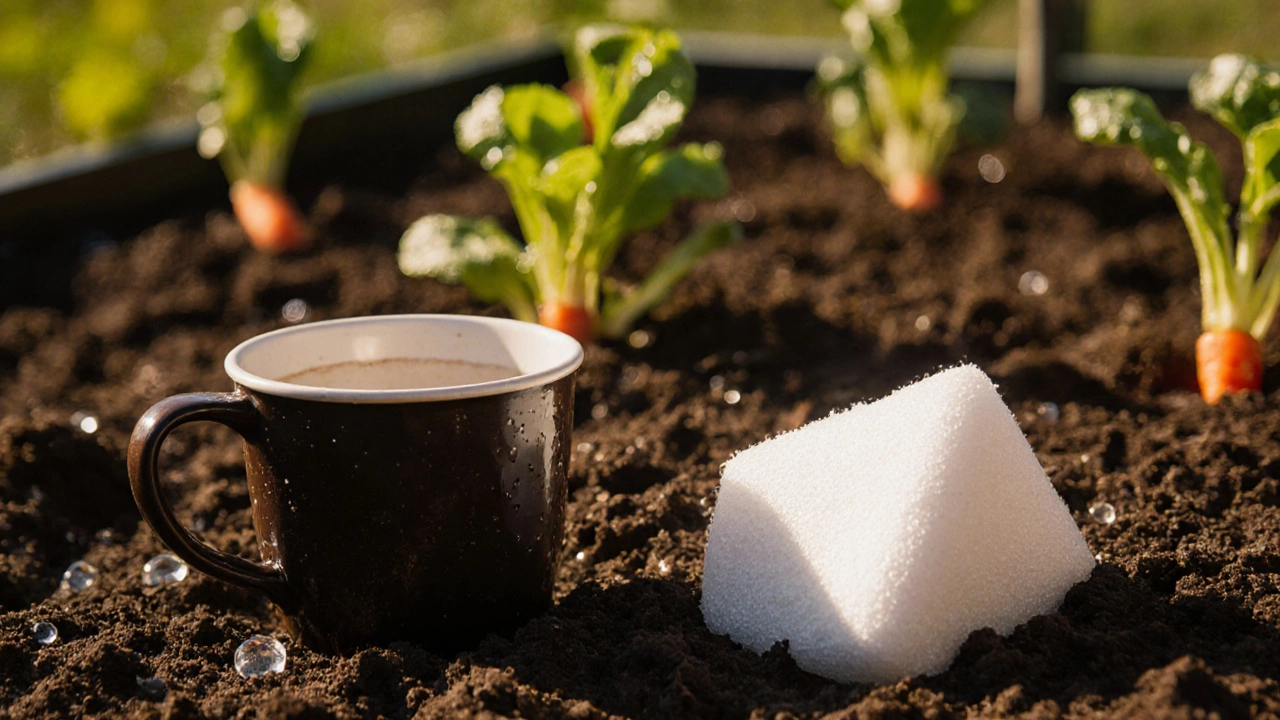Explore the safety of styrofoam in vegetable gardens, covering its effects on soil health, risks, benefits, alternatives, and practical guidelines for growers.
Vegetable Garden Soil: What Makes It Work for Indian Gardens
When you're growing vegetables in India, the vegetable garden soil, the living layer of earth where roots grow and nutrients are exchanged. Also known as garden bed soil, it's not just dirt—it's the foundation that decides whether your tomatoes thrive or your beans give up after two weeks. Most people think good soil means dark, rich earth. But in India’s varied climate—from the dry heat of Rajasthan to the monsoon-soaked soil of Kerala—the real secret is balance. Too much clay? It turns to brick. Too much sand? Water and nutrients wash away. The best vegetable garden soil holds moisture without drowning roots, drains fast enough to avoid rot, and feeds plants without needing chemicals every month.
What you add to your soil matters more than where you buy it. compost for vegetables, broken-down organic matter that feeds microbes and improves structure is the most reliable fix for almost any soil problem. Whether you’re using kitchen scraps, cow dung, or leaf mold, compost adds life. Then there’s soil drainage, how quickly water moves through the earth. In places like Mumbai or Bengaluru, where rains come hard and fast, poor drainage kills more plants than pests. Adding perlite, coarse sand, or even broken brick pieces helps water escape without washing away nutrients. And don’t forget pH—most vegetables want it slightly acidic, between 6.0 and 6.8. Lime or wood ash can raise it; peat or coffee grounds can lower it. These aren’t fancy tricks. They’re basic fixes used by farmers who’ve been growing food here for generations.
You’ll find posts here that show exactly how to fix dense, hard soil with simple amendments like leaf mold or vermicompost. Others explain why drip irrigation fails if the soil doesn’t hold water right. There are guides on what to grow in clay-heavy regions, how to rebuild soil after a monsoon, and why some gardeners swear by cow urine mixtures. This isn’t about buying expensive products. It’s about understanding what your soil is telling you—and how to respond. Whether you’re growing brinjal on a balcony or potatoes in a backyard, the same rules apply: feed the soil, not just the plant. And once you get that right, everything else gets easier.
Creating the perfect soil is essential for a flourishing vegetable garden. Start by learning what your soil lacks and what it needs. Adding organic matter like compost or aged manure can greatly enhance soil quality. Make sure to test your soil's pH levels and adjust them as needed. With the right balance of nutrients, your veggies will thrive.

